Norse mythology is filled with tales of gods, heroes, and epic battles. Central to many of these stories are the legendary weapons wielded by the gods themselves. These divine artifacts are not just tools of war but symbols of power, authority, and the complex fates that govern the lives of gods and mortals alike. Let’s delve into six of the most famous god’s weapon in Norse mythology.
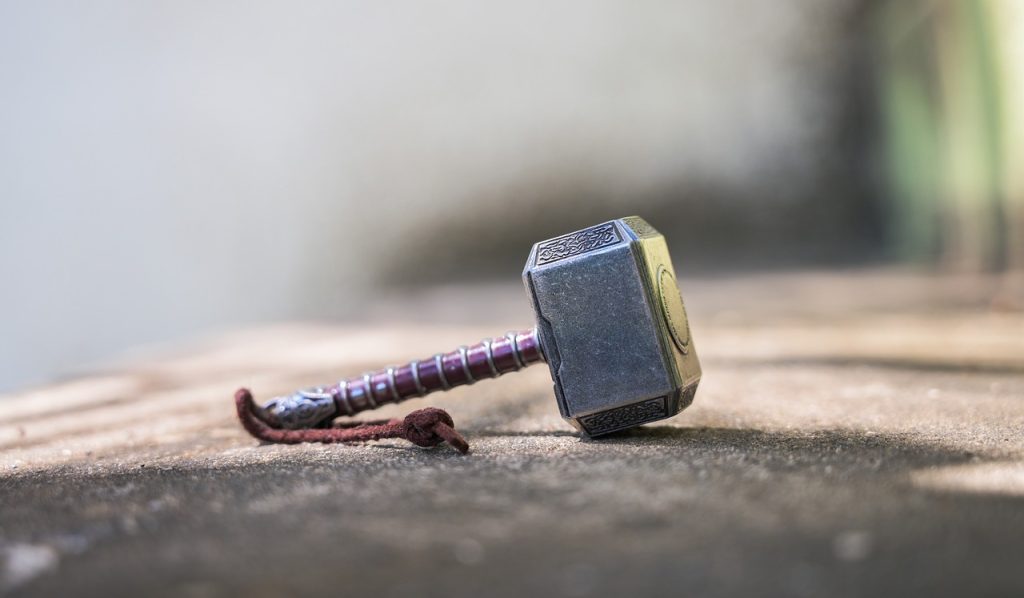
1. Mjölnir, The Hammer of Thor
Mjölnir, the iconic hammer of Thor, the god of thunder, is one of the most recognized symbols from Norse mythology. Crafted by the dwarf brothers Brokkr and Sindri, Mjölnir is not merely a weapon but a tool of protection for both Asgard and Midgard. Its power is such that it can level mountains or be thrown hundreds of miles to strike a target with unerring accuracy. What makes Mjölnir truly divine is its ability to return to Thor’s hand after being thrown, embodying the concept of the boomerang long before it was known in many parts of the world.
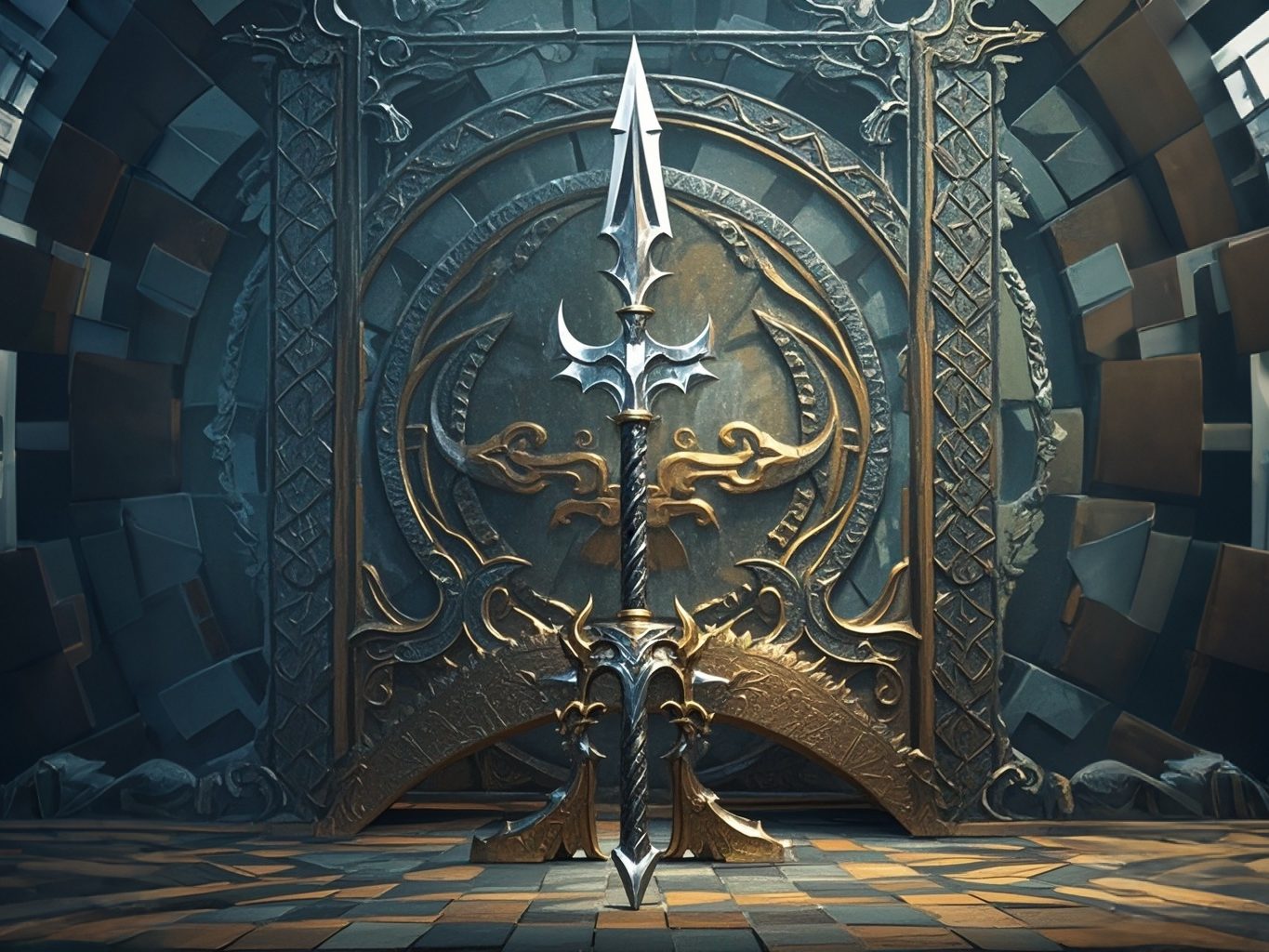
2. Gungnir, the Spear of Odin
Odin, the Allfather and the chief of the Aesir, wields Gungnir, a spear that is said to be so mighty that it will hit its target without fail. The name Gungnir translates to “swaying” or “shaking,” reflecting the spear’s power to sway the course of battles. It is a symbol of Odin’s strategic mind and his role as the god of wisdom and war. Gungnir is also associated with the concept of destiny, as its throws are said to be unerring and inevitable, much like the threads of fate that Odin himself weaves.
3. Freyr’s Sword
Freyr, the god of fertility, wealth, and peace, is often depicted with a mighty sword that shines so brightly it can light up the darkest of nights. Although its name isn’t in surviving texts, this sword’s power is undeniable. The sword is said to fight on its own, making Freyr a formidable force in battle despite his more peaceful nature. This weapon symbolizes the protective and nurturing aspects of Freyr, as it defends the land and ensures the prosperity of the people.
4. Gram, The Sword of Sigurd
Gram, the legendary sword of the hero Sigurd (or Sigmund), is a symbol of destiny and heroism. They say Sigmund, Sigurd’s dad, pulled it out of a burning tree, and later it was passed down to Sigurd himself. Gram is famous for being able to cut through flames and take down dragons, which we see in Sigurd’s legendary battle with Fafnir. The sword’s tale is closely linked to the sad fate of the Volsung clan, serving as a powerful reminder of how destiny keeps repeating itself in Norse stories.
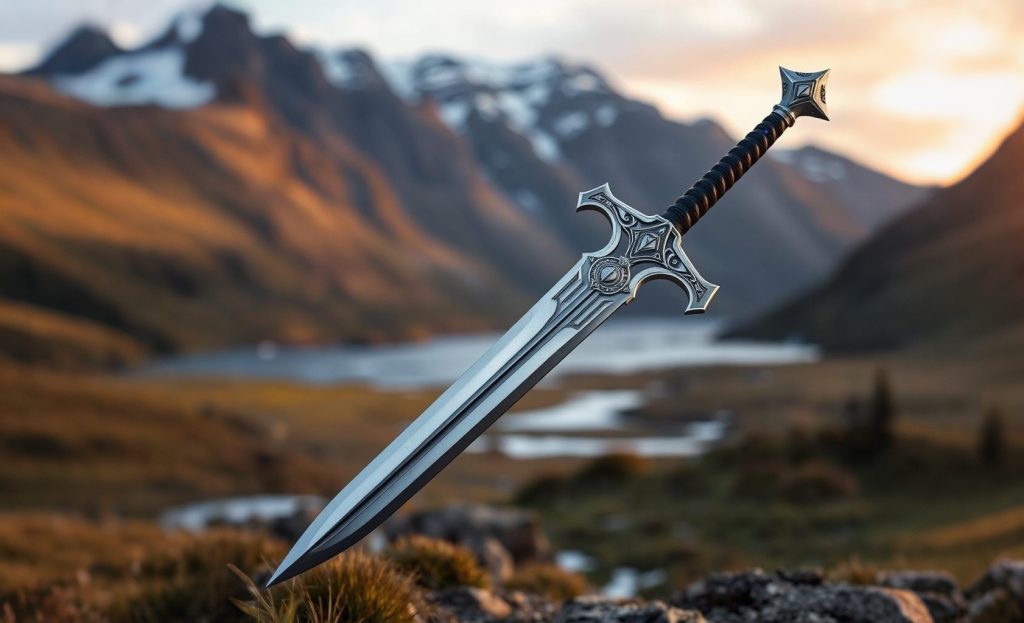
5. Tyrfing, The Cursed Sword
Tyrfing is a sword of dark prophecy and doom. The dwarf Dvalin forged Tyrfing under Loki’s command. Tyrfing is cursed to cause three kings’ deaths and nine generations of kinslaying. This sword shows Norse mythology’s darker side. Powerful weapons can be double-edged and bring ruin or protection.
6. Dainsleif, The Sword of Högni
Dainsleif, the sword of Högni, is another cursed blade in Norse mythology. It is said to be so sharp that it can cut through anything, including the very air itself. The sword is a symbol of the tragic fate that befalls Högni, who is fated to die by his own sword. Dainsleif is a reminder of the inexorable nature of fate and the sometimes tragic consequences of wielding great power.
These divine weapons are more than just tools; they are embodiments of the gods’ personalities, the forces of nature, and the intricate web of fate that governs the Norse cosmos. Each weapon carries with it a story that resonates with the themes of power, destiny, and the eternal struggle between order and chaos that is central to Norse mythology.
Fast Q&A
- What is the name of Thor’s hammer and what makes it unique?
Thor’s hammer is called Mjölnir. It is unique because it can level mountains, strike targets with great accuracy, and return to Thor’s hand after being thrown, embodying the concept of a boomerang. - What is the name of Odin’s spear and what does its name signify?
Odin’s spear is named Gungnir, which translates to “swaying” or “shaking.” The name signifies the spear’s power to sway the course of battles and reflects Odin’s role as the god of wisdom and war. - Which weapon is said to fight on its own, symbolizing the protective and nurturing aspects of its owner?
Freyr’s unnamed sword is said to fight on its own, symbolizing the protective and nurturing aspects of the god of fertility, wealth, and peace. - How is Tyrfing different from other weapons mentioned in the article?
Tyrfing is different because it is a cursed sword that is prophesied to cause the deaths of three kings and nine generations of kinslaying, showcasing the darker side of Norse mythology. - What does the sword Dainsleif symbolize in Norse mythology?
Dainsleif symbolizes the tragic fate that befalls Högni, who is destined to die by his own sword. It serves as a reminder of the inexorable nature of fate and the sometimes tragic consequences of wielding great power.
Alicia
Alicia is a passionate writer with degrees in English and American Literature. Her journey through the worlds of fashion, culture and design is as fascinating as her literary pursuits. Beyond literature, Alicia is equally an optimist who loves life. Whether it's photography, knitting, pottery, or yoga, she's willing to try it all. Beyond trends and labels, she advocate for sustainability and ethical fashion practices. She believe in the power of conscious consumerism, and she strives to highlight brands that prioritize environmental responsibility and social impact.
Recent Posts
Your Goth Christmas Style Guide
11/25/2025Cybergoth Aesthetic
11/11/2025Categories
Related Articles
A Guide to How to Train Your Dragon Species
Welcome, fellow dragon enthusiasts and aspiring Viking trainers! Have you ever wondered...
ByAlicia06/24/2025Dragon Rings: From Mythology to Modern Symbolism
The dragon, a mythical creature revered across cultures, has long been a...
ByAlicia03/18/2025Beasts of Norse Mythos: the Legendary Creatures of Viking Lore
Norse mythology is a tapestry of gods, giants, and cosmic battles, but...
ByAlicia02/18/2025A Complete Guide to Skull Symbol
The skull symbol has held a fascination for humanity for centuries, appearing...
ByAlicia11/19/2024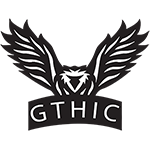

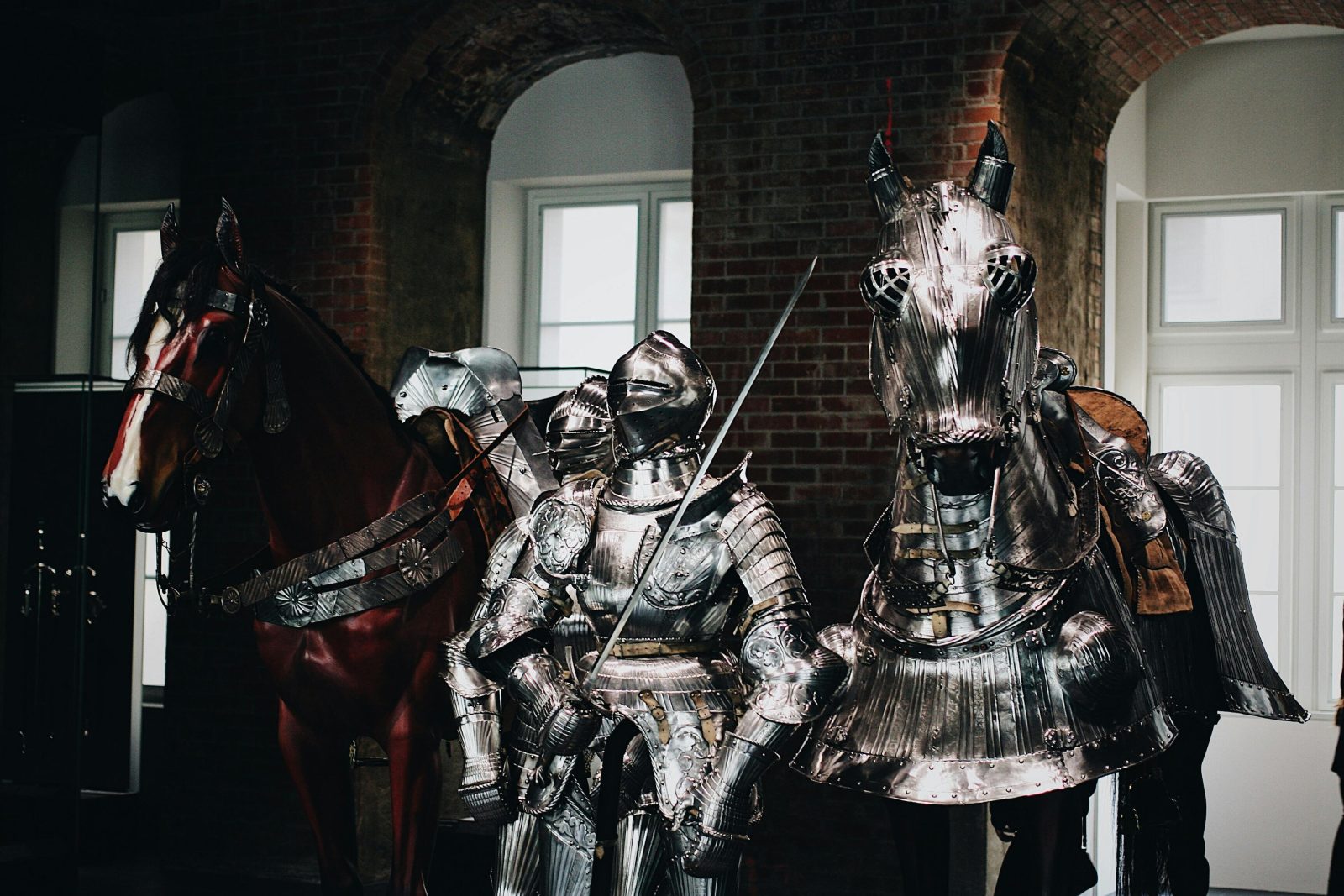







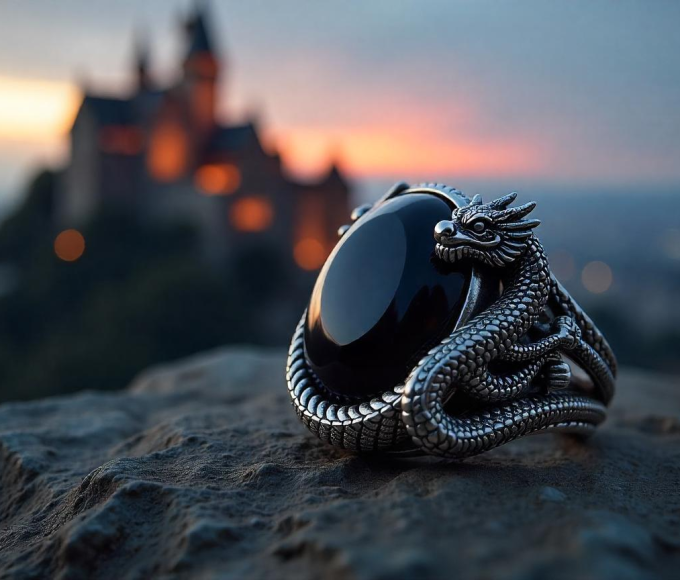
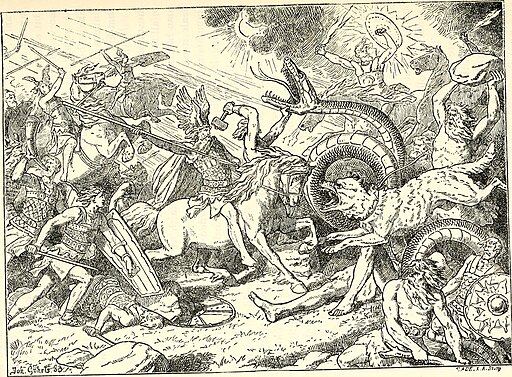
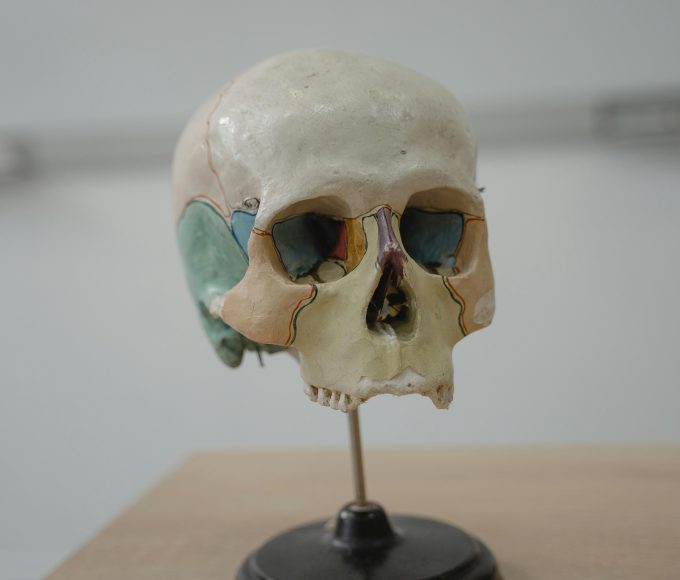
Leave a comment